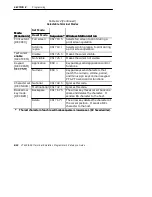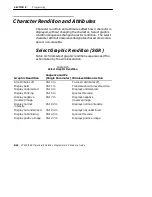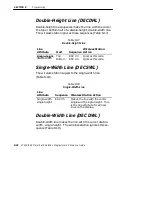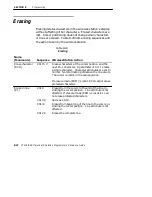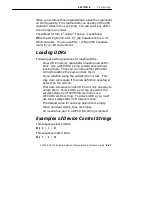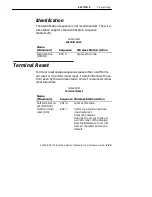
SECTION 8
"
Programming
8-36
VT220/ANSI Terminal Emulation Programmer’s Reference Guide
User-Defined Keys (DECUDK)
The wireless station has 20 user-defined keys (UDKs). You
can define the codes of 15 of these keys. The keys are:
"
F6 through F14
"
F15 (Help)
"
F16 (Do)
"
F17 through F20
Use UDKs to store and recall text and commands that you
often use with applications. You should refer to your
application’s software manual for the commands you can
store in user-defined keys.
If you use dual sessions, you can define UDKs for each ses-
sion. However, you can only save one set of UDK defini-
tions. For each session you can use a total of 256 charac-
ters to define UDKs.
Using UDKs
To enter definitions for the 15 UDKs, you program the defi-
nitions with DECUDK device control strings. To use a UDK
after you have defined it, the wireless station must be in
shift lock mode (
not shift mode, such as gold shift or black
shift). For example, if you defined the F6 key, you can use
it by pressing the shift lock key for the wireless station and
then the key sequence for the F6 key. The following chart
shows key combinations.
Wireless Station
Keys
RT3210
[SFT]+[FUNC]+[F]
RT1100
[BLACK]+[GOLD]+[BLACK]+[F]
RT1700
[BLACK]+[GOLD]+[F6]
RT5900
[SHIFT]+[F6]
PEN*KEY
R
6400
[BLUE]+[SHFT]
PEN*KEY 6500
[Caps Lock]
Summary of Contents for VT220/ANSI
Page 4: ......
Page 18: ...CONTENTS xiv VT220 ANSI Terminal Emulation Programmer s Reference Guide...
Page 26: ...SECTION 1 Introduction 1 8 VT220 ANSI Terminal Emulation Programmer s Reference Guide...
Page 264: ...APPENDIX A Bar Code Scanning A 4 VT220 ANSI Terminal Emulation Programmer s Reference Guide...
Page 276: ...INDEX Index 12 VT220 ANSI Terminal Emulation Programmer s Reference Guide...

